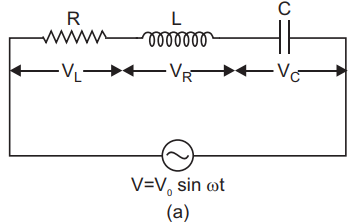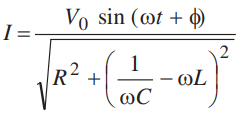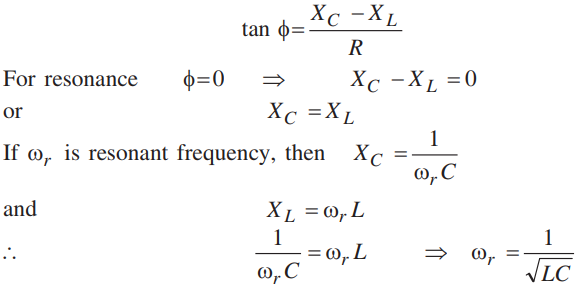Suppose resistance R, inductance L and capacitance C are connected in series and an alternating source of voltage V =V0sinωt is applied across it. (fig. a) On account of being in series, the current (i ) flowing through all of them is the same.

Suppose the voltage across resistance R is VR, voltage across inductance L is VL and voltage across capacitance C is VC. The voltage VR and current i are in the same phase, the voltage VL will lead the current by angle 90° while the voltage VC will lag behind the current by angle 90° (fig. b). Clearly VC and VL are in opposite directions, therefore their resultant potential difference =VC -VL (if VC >VC ).
Thus VR and (VC - VL) are mutually perpendicular and the phase difference between them is 90°. As applied voltage across the circuit is V, the resultant of VR and (VC - VL) will also be V. From fig.


Instantaneous current

Condition for resonance to occur in series LCR ac circuit:
For resonance the current produced in the circuit and emf applied must always be in the same phase.
Phase difference (ϕ) in series LCR circuit is given by

Power factor is the cosine of phase angle ϕ, i.e., cosϕ = R/Z.
For maximum power cosϕ =1 or Z = R
i.e., circuit is purely resistive.
For minimum power cosϕ = 0 or R = 0
i.e., circuit should be free from ohmic resistance.